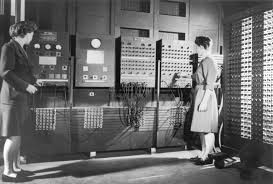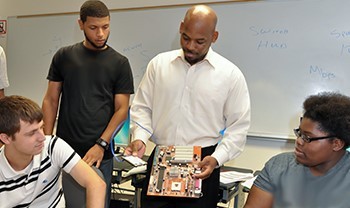
A Beginner’s Guide To The World Of Information Technology
Information Technology (IT) uses computers and other telecommunications devices to receive, store, retrieve, transmit, and manipulate data for personal, business, and government use. Common devices and equipment used in today’s world of information technology include:
- Notebook and desktop computers
- Telephones and televisions
- Servers and network hubs
- Satellites and routers
- Headsets and multi-function printers
- Audio-visual instructional equipment
- Digital cameras and radio equipment
IT is one of the fastest-growing industries in the world because it is seen today as a necessity instead of a luxury.
People who work in this industry tend to earn higher incomes compared to other types of work and careers.
A stimulus behind its growth is that organizations want faster communications and more automation in their work processes.
Information Technology In Its Infancy
The term Information Technology first appeared in 1958 in an article in the Harvard Business Review written by Harold J. Leavitt and Thomas L. Whisler. The world community has been using this terminology they coined ever since. Computer terms included in IT development include electromechanical from 1849 – 1940 and electronic from 1940 to the present time.
Further development of computers and information technology followed this timeline:
- 1941: The Zuse Z3 was the first programmable computer
- 1948: First electronic digital stored-program computer
- 1953: The first transistorized computer
- 1956: IBM introduced the first hard disk drive
- The 1960s: Database management systems emerged
- The 1970s: Alternative relational storage computer with predicate logic
- 1980: First commercial relational database management system introduced
- The 1980s: Data warehouses came onto the scene
And now, the rest is history and you can become part of it by working in this challenging and rewarding career.
An Expanded View Of Information Technology

Technology is a means to an end and IT is an application of computing and communication technologies to create, manage, and use data, knowledge, and wisdom. Technology is also seen as the human interface with computers and computer networks. IT also includes:
- Computer peripherals
- Voice and video networks
- Equipment and staff that operates them
- Purchased services related to IT
- Developing, purchasing, and licensing software
- Maintaining hardware and software
|
“IT is one of the fastest-growing industries in the world because it is seen today as a necessity instead of a luxury. People who work in this industry tend to earn higher incomes compared to other types of work and careers.” |
Organizations conduct many processes in this industry, such as producing videos digitally, coding software, creating web pages, and designing computer systems. Others design 3-D artwork, administer databases, write technical documentation, and provide technical support.
Administration and technical employees work as teams to use their job skills and knowledge to manage companies’ IT systems. Third-party and vendor support personnel help the teams get their work done as needed.
Information Technology is a diverse field where employees also work in specialized areas like:
- Applications management
- Software development
- Hardware components
- Storage administration
- Server processing
- Network architecture
According to the Bureau of Labor Statistics (BLS), IT job growth is projected to rise by 11% from 2019-2029 which is much faster than the average of all other occupations. Also according to BLS, 531,200 new jobs will be added to the workforce during this same time primarily in the areas of cloud computing, collection and storage of data, and information security. According to BLS, there was a median annual wage of $88,240 for computer and technology jobs in the U.S. in May 2019.
How IT Is Often Used Today

The business terms and products most often associated with IT today include:
- Computers in all of their variations
- Hardware and software
- Electronics and electrical components
- Semiconductors and the internet
- Electrical engineering
- E-commerce and computer services
- Telecommunications and virtual reality
Business applications include databases, transactional systems, email servers, web servers, customer relationship management, and resource planning systems. Computer servers interact with clients and other servers in their respective networks. File, multimedia, telephone, web, and sensor data are also included in the Information Technology world.
IT architecture relates to virtualization and cloud computing across locations. Clouds are fast becoming a major player in this industry. The primary types of today’s IT occupations available for those with an Associate in occupational Studies (AOS) degree in information technology include:
- Computer Systems Analyst
- Network and Computer System Administrator
- Computer Support Specialist
- Computer Programmer
- Database Administrator
If you are serious about entering this career, enroll in a quality program, and start working toward it!
A College Degree Enhances Your Personal Knowledge And Skills For An Entry-Level Job

Enroll in an intensive program to get a realistic overview of the Information Technology field and the essential knowledge and skills to land an entry-level job. An Associate in Occupational Studies (AOS) Degree in Information Technology is the first step to take. You will gain the skills to work with these current real-world applications:
- Hardware and software tools
- PC Office applications, networking, and programming
- Related mathematics review and success skills
- Communicate effectively with employees and equipment
- Working knowledge of C# and Visual Basic.NET
- Database-related applications
You can see how your college training matches up with the information and description of the world of Information Technology. The future for this career looks bright and the time to begin yours is now.
For more information about graduation rates, the median debt of students who completed the program, and other important information, please visit our website at: https://iticollege.edu/disclosures/




